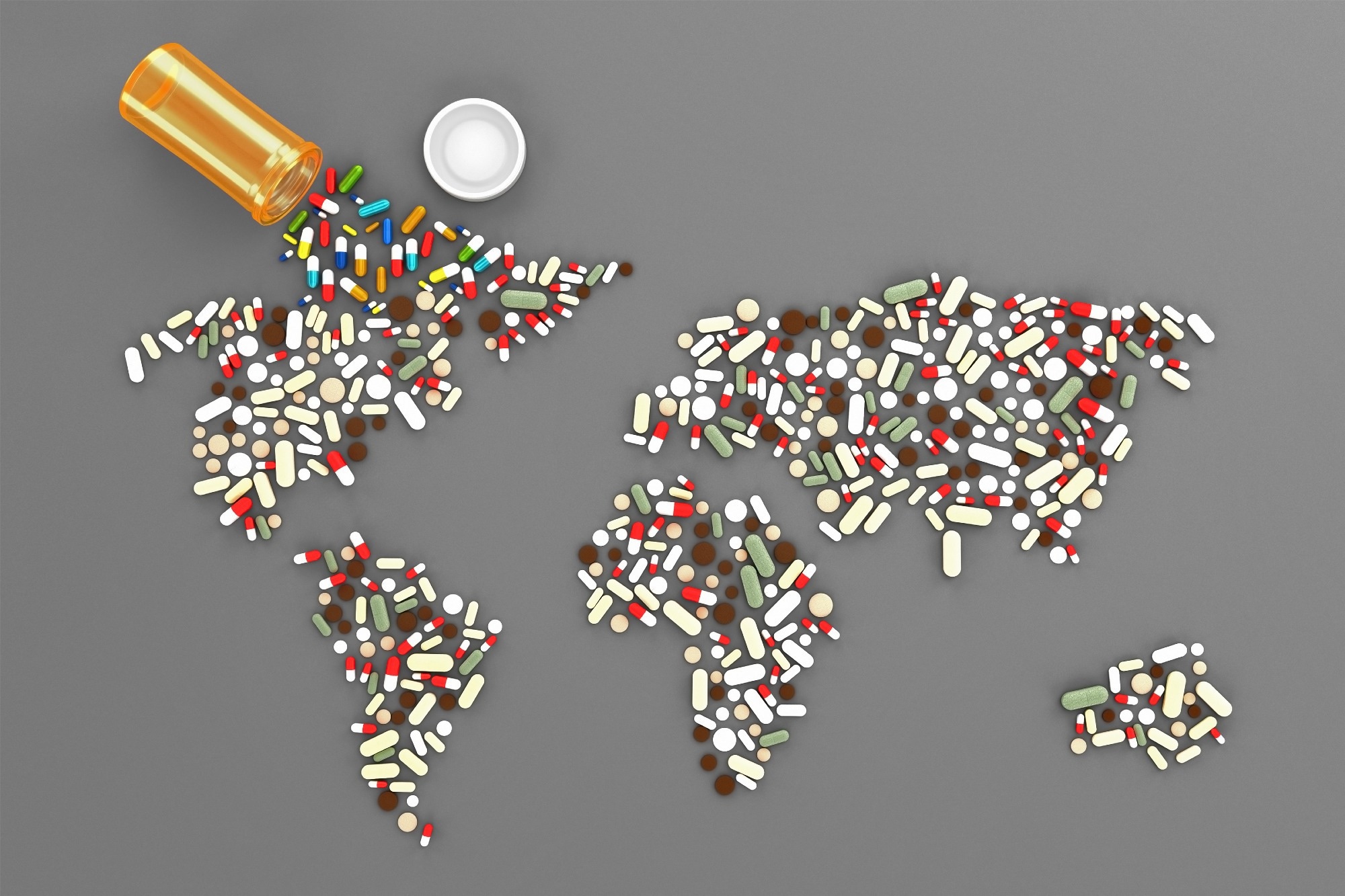What is antimicrobial resistance?
What are the factors associated with antimicrobial resistance?
Poverty and antimicrobial resistance
References
Further reading
Antimicrobial resistance has become a significant public health concern worldwide because of its long-lasting adverse effects on managing microbial infections.
According to the World Health Organization (WHO), poverty is crucial to developing antimicrobial resistance.
 Image Credit: Fahroni/Shutterstock.com
Image Credit: Fahroni/Shutterstock.com
What is antimicrobial resistance?
Antimicrobials are medicines used to treat bacterial, viral, fungal, and parasite infections in humans, animals, and plants. Antimicrobial resistance occurs when genetic mutations make these microbes unresponsive to medicines.
This leads to ineffective management of the infections, which subsequently increases the risk of disease spread and the development of severe and often fatal infections.
The emergence of multidrug-resistant bacteria, such as carbapenem-resistant Gram-negative bacteria, has significantly impacted the therapeutic management of common infections.
These bacteria, commonly called superbugs, cause untreatable infections by pre-existing antibiotics. This highlights the need for developing new antimicrobials, especially antibiotics that can treat multidrug- and pan-resistant microbial communities.
Despite the ever-increasing demand, developing and supplying new antimicrobials is currently facing a sharp decline worldwide. According to the 2019 WHO report, several antibiotics have been developed against the most pathogenic multidrug-resistant bacteria.
However, only a few of them have been classified as innovative. This gap between demand and supply is one of the significant factors associated with antimicrobial resistance.
WHO: What is antimicrobial resistance (AMR)?
What are the factors associated with antimicrobial resistance?
Microbes acquire genetic mutations over time and evolve naturally to develop resistance against pre-existing therapeutics. These drug-resistant microbes are present in humans, animals, plants, and the environment and spread quickly from person to person and between humans and animals.
The main driving forces of antimicrobial resistance include overuse/misuse of antimicrobials, lack of sanitation and hygiene, inaccessibility to good-quality and cost-effective antimicrobials, unregulated production of antimicrobials, lack of awareness and knowledge, and premature termination of antimicrobial therapy because of cost.
The impact of these factors is more pronounced in socioeconomically deprived countries. The WHO has recognized poverty as the primary driving force of antimicrobial resistance.
 Image Credit: ParamePrizma/Shutterstock.com
Image Credit: ParamePrizma/Shutterstock.com
Poverty and antimicrobial resistance
Infectious diseases caused by drug-resistant microbes are among the leading causes of death in socioeconomically deprived countries. Although antimicrobial resistance affects all countries worldwide, a disproportionately higher impact observed in middle- and low-income countries is associated with many poverty-driven factors.
These factors include lack of quality control in antimicrobial manufacturing units, lack of healthcare regulation on antimicrobial use, inadequate supply of quality medicines, lack of money to avail appropriate treatment, and delivery of antimicrobials without prescription.
Lack of healthcare regulation
Lack of attention to healthcare systems and inadequate awareness and knowledge often leads to inappropriate use of antimicrobials with suboptimal doses. Financial scarcity is a significant factor responsible for the lack of antimicrobial resistance surveillance, which limits the identification of newly emerging drug-resistant strains.
Delivering antimicrobials without prescription is another major cause of antimicrobial resistance in socioeconomically deprived countries. Such malpractice increases the possibility of self-medication or drug dispensation by untrained people.
People with poor financial status are more likely to self-medicate to waive the cost of a physician consultation. Furthermore, poverty-affected people are more likely to abruptly terminate an ongoing antimicrobial therapy because of their inability to avail the entire treatment course.
Such inadequate use of antimicrobials can act as a positive selection pressure on the microbial population, leading to the evolution of drug-resistant microbes.
Lack of environmental regulation
Poor management of environmental factors, such as water, air, and soil, is one of the leading causes of infectious diseases. Lack of infrastructure to ensure proper sanitation and hygiene can also increase the risk of contagious diseases.
Studies have shown that access to clean water, and sanitation can reduce the risk of antimicrobial medicine-treated gastrointestinal diseases by 60%. Similarly, maintaining hand hygiene in clinical setups alone can reduce the risk of infectious diseases and the use of antimicrobials by 40%.
Inaccessibility to healthcare services
Countries with poor economies often experience a lack of healthcare resources to reach a large population, especially in rural areas. This results in inaccessibility to appropriate healthcare facilities, qualified healthcare professionals, and effective antimicrobials.
A significant imbalance between universal health coverage and the preservation of currently available antimicrobials always persists in poverty-affected areas.
A lack of quality control services in antimicrobial manufacturing units can lead to the production of substandard medicines. In this context, studies conducted in socioeconomically deprived countries have identified the production of counterfeit drugs with suboptimal doses of active ingredients.
Social and cultural factors
Poor educational status and a lack of awareness may force poverty-affected people to believe in popular myths and cultural practices and keep faith in traditional practitioners.
To minimize long-term treatment expenses, people avoid necessary laboratory examinations and expect physicians to prescribe antimicrobials even for mild or moderate illnesses. All these factors significantly increase the risk of antimicrobial resistance.
Lack of manufacturing of novel antimicrobials
Because of the poor economy, many developing countries fail to provide necessary financial aid for drug research, development, and manufacturing. This factor further increases the risk of antimicrobial resistance because developing new and improved antimicrobials is the most effective way of counteracting drug resistance.
Reducing new drug production makes the available antimicrobials more expensive and unaffordable to poverty-affected people. Such situations force people to buy medicines from unregulated drug dispensaries, mainly selling substandard medicines for profit-making. All these factors collectively increase the risk of antimicrobial resistance.
References
Further reading
Last Updated: Jun 27, 2023